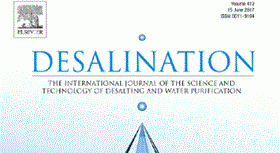Abstract
Climate change is a continuous phenomenon that in some conditions it may lead to drought which substantially affects drinking water resources. Also, there may be other associated impacts, such as seawater interruption, water quality deterioration, drinking water deficiency, etc. While climate change affects surface water resources straight over changes in the significant long-lasting climate variables such as rainfall, evapotranspiration, and air temperature, the relationship between groundwater and climate variables is more complicated. The current study aimed to investigate the special effects of different climatic factors including temperature, precipitation, evaporation, and transpiration on the quality of groundwater resources of Varamin plain, Iran. In this study, out of 80 wells with specific spatial information, sampling was done. In the following, the water samples quality were assessed by considering different parameters including pH, electrical conductivity, total dissolved solids, anions
and cations concentrations, and total hardness. Finally, the raw data mapped by Arc GIS 10.3 software. The results showed that these parameters (except pH) along the plain are highly variable and the spatial distribution of the data is not normal, and the frequency of pixels with fewer values is higher than the spatial mean of the region. Spatial distribution of pH was about 0.05 in all the plain. According to our findings, Correlation analysis showed that water resources quality is influenced by climatic factors. Also, it should be noted that the maximum temperature had the highest impact.



No responses yet